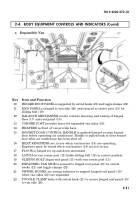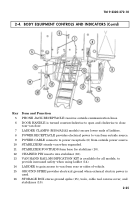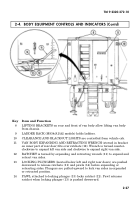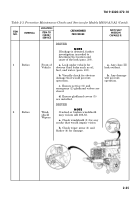TM-9-2320-272-10 - Page 129 of 481
TM 9-2320-272-10
2-30
i.
Correct Assembly or Stowage.
Check each component or assembly for
proper installation and ensure that there are no missing parts.
WARNING
Accidental or intentional introduction of liquid contaminants into
the environment is in violation of state, federal, and military regu-
lations. Refer to Lubrication Order (para. 3-1) for information con-
cerning storage, use, and disposal of these liquids. Failure to do so
may result in injury or death.
Cleaning is an after-operation service performed by operator/crew to keep the
vehicle in a state of readiness. Facilities and material available to operators for
vehicle cleaning can vary greatly in differing operating conditions. However, vehi-
cles must be kept as clean as available cleaning equipment, materials, and tactical
situations permit.
a.
General Cleaning Precautions.
(1)
All cleaning procedures must be accomplished in well-ventilated areas.
(2)
Protective gloves, clothing, and/or respiratory equipment must be worn
whenever caustic, toxic, or flammable cleaning solutions are used.
(3)
Diesel fuel or gasoline must never be used for cleaning.
(4)
A fire extinguisher must be available and ready during all cleaning oper-
ations involving solvents.
b.
Special Precautions.
(1)
Do not allow cleaning compounds to come into contact with rubber,
leather, vinyl, or canvas materials.
(2)
Do not allow corrosion-removing cleaning compounds to contact painted
surfaces.
(3)
Do not use air in cleaning truck cab interiors or van body interiors.
(4)
Do not steam–clean any part of vehicle that has been rustproofed.
(5)
Mildew must be removed with a bristle brush before canvas tarpaulin
can be properly cleaned and aired.
(6)
The radiator is always cleaned first from behind in order to blow debris,
insects, or other obstructions out and away from the radiator core. Low pressure
water or air can be used in cleaning radiator core of obstructions.
c.
Cleaning Materials.
Detailed description of specific cleaning compounds,
cleaning solvents, drycleaning solutions, and corrosion-removing compounds are
found in TM 9-247.
2-8. CLEANING INSTRUCTION AND PRECAUTIONS
2-7. PMCS PROCEDURES (Contd)
Back to Top




















